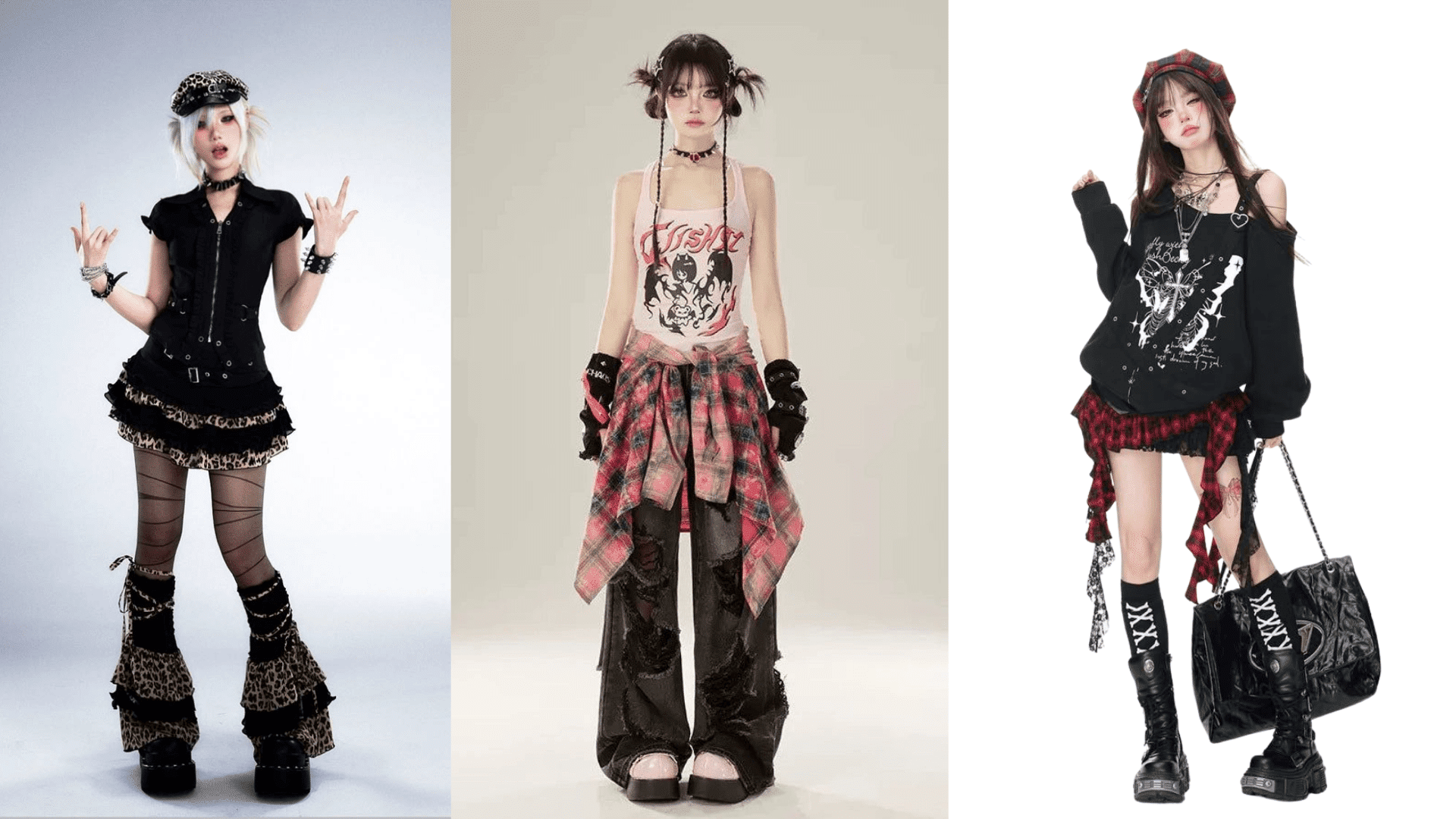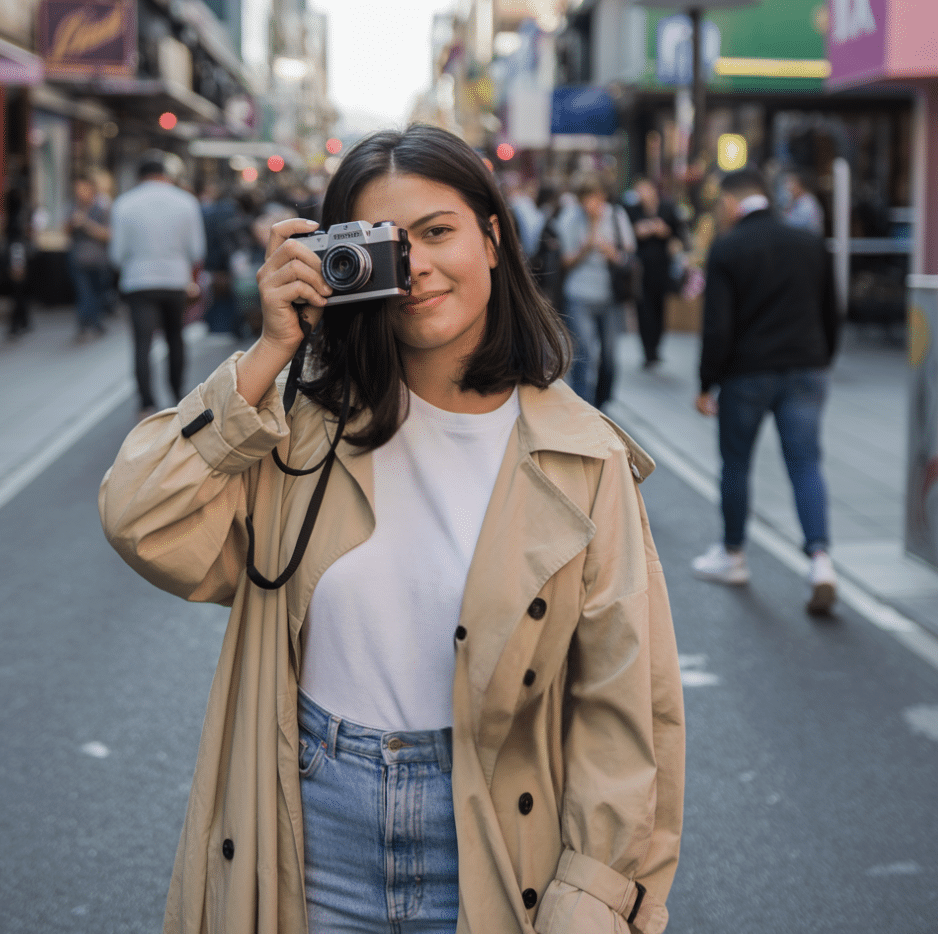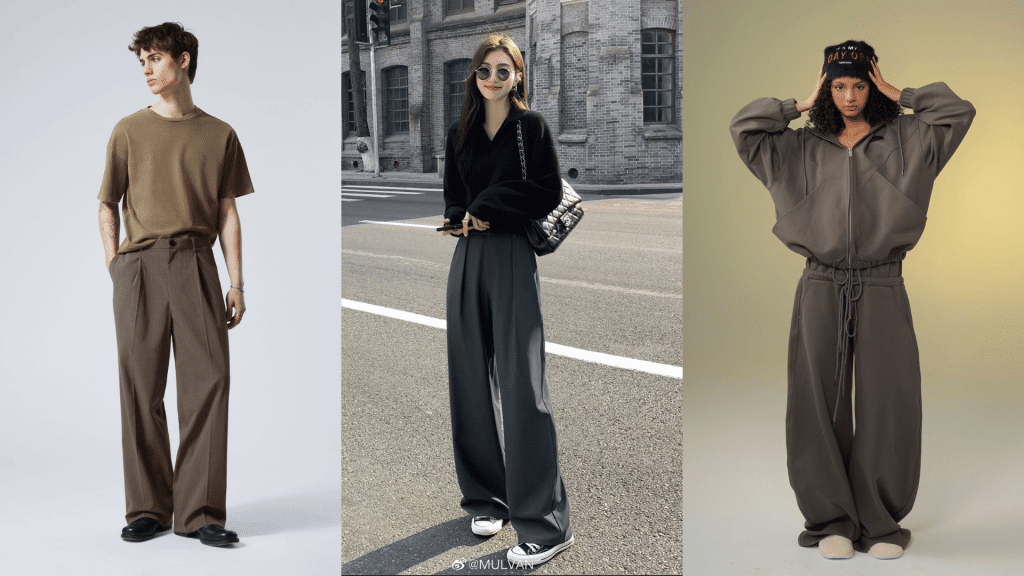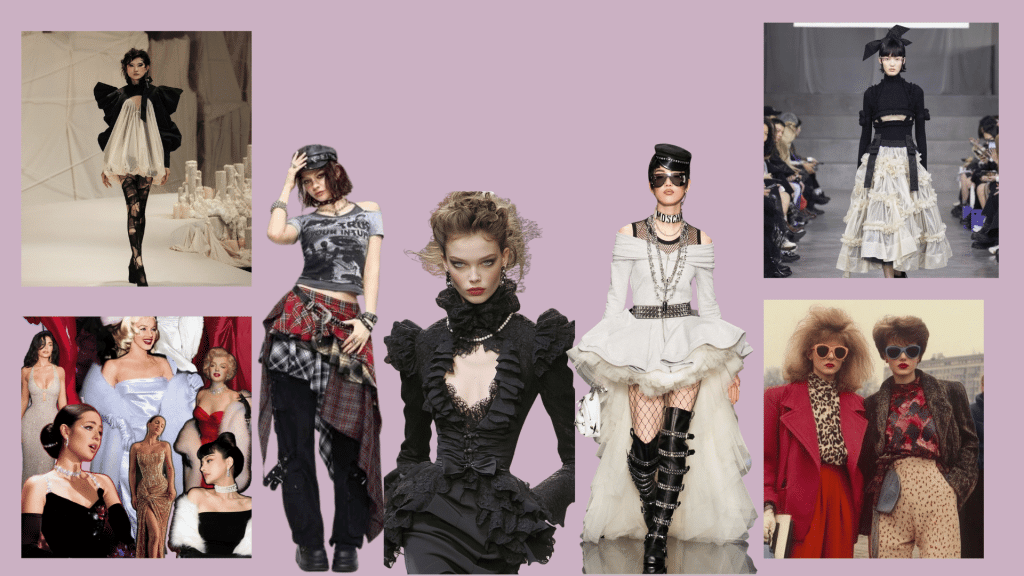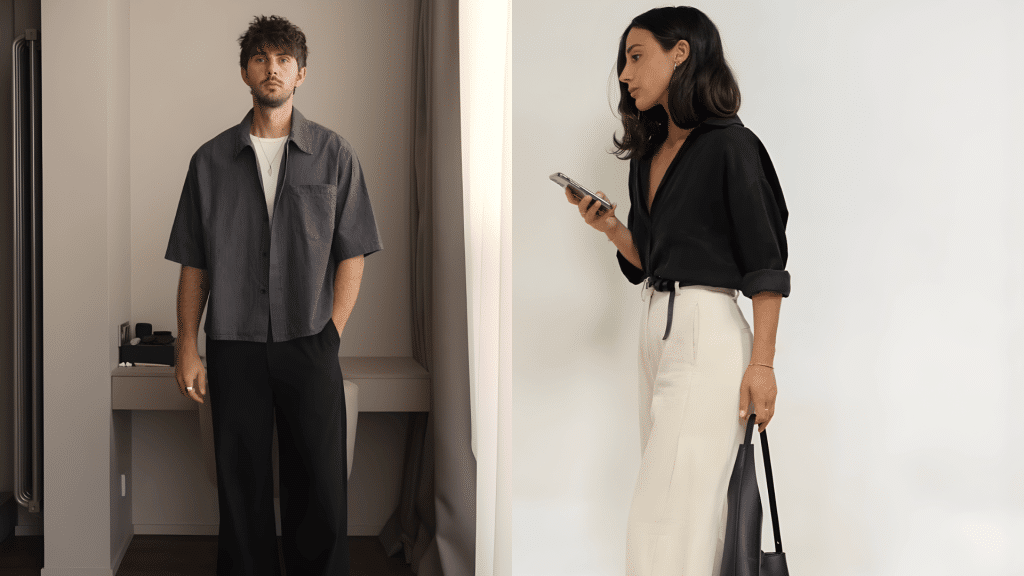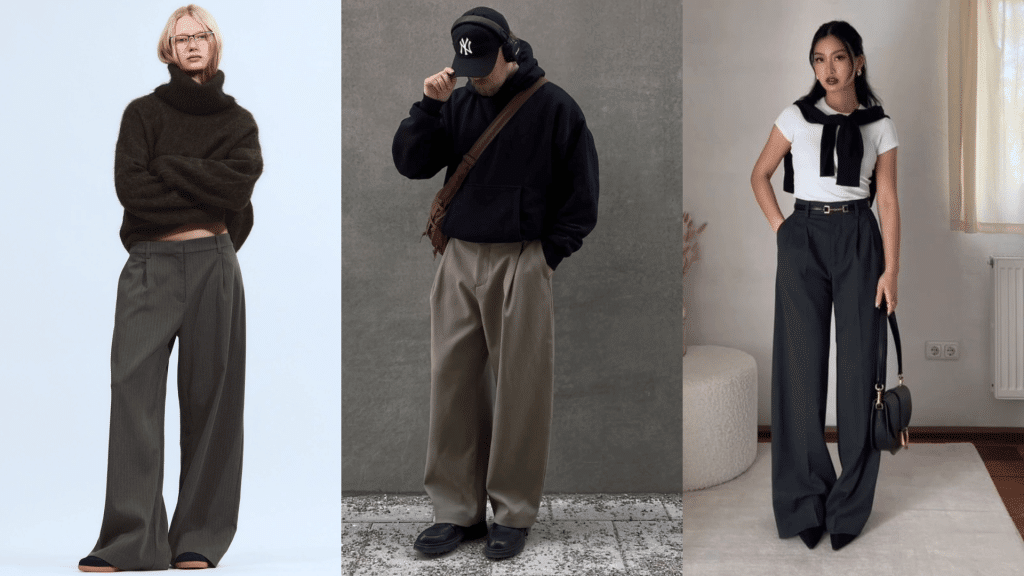Imagine walking through Tokyo’s Harajuku district, where performers in elaborate makeup, Gothic attire, and gravity-defying hairstyles blur the lines between fashion and theatrical art.
This striking look is characteristic of Visual Kei style, a Japanese movement from the 1980s that mixes rock with dramatic visuals to create new cultural expression.
‘Visual Kei,’ meaning “visual style,” is more than just music; it’s a philosophy where appearance tells a story, challenging gender norms and societal expectations through artistic expression.
Originating from Japan’s underground scene, it has progressed from a rebellious subculture into a global phenomenon, inspiring artists, fashion designers, and those seeking original self-expression.
Understanding Visual Kei style
Visual Kei style emerged in Japan’s late 1980s independent scene as bands used striking visuals to stand out, blending elaborate costumes, makeup, and androgyny.
Unlike Western rock, which focuses mainly on sound, Visual Kei treats appearance as part of the artistic message, creating a holistic sensory experience.
Theatricality permeates every aspect, with performers adopting personas that blur the lines between reality and fantasy. What distinguishes Visual Kei from conventional rock fashion lies in its philosophical approach.
This artistic intentionality changes musicians into visual artists, blending Eastern theatrical traditions with Western rock to establish Visual Kei as a cultural phenomenon, not just a fashion trend.
Cultural Significance of Visual Kei: Art as Social Commentary
Visual Kei Style extends beyond fashion to champion individuality in Japan’s conformist society.
Artists use a dramatic vibe to express personal identity, challenging traditional expectations through bold self-presentation that celebrates uniqueness over uniformity.
The movement embraces androgyny, mixing masculine and feminine traits through makeup and attire to show that beauty isn’t binary.
As a form of cultural resistance, Visual Kei rejects Japan’s pressure for standardized appearance and behavior. Artists live their creativity openly, refusing to compartmentalize artistic expression within acceptable boundaries.
The Early Years of Visual Kei
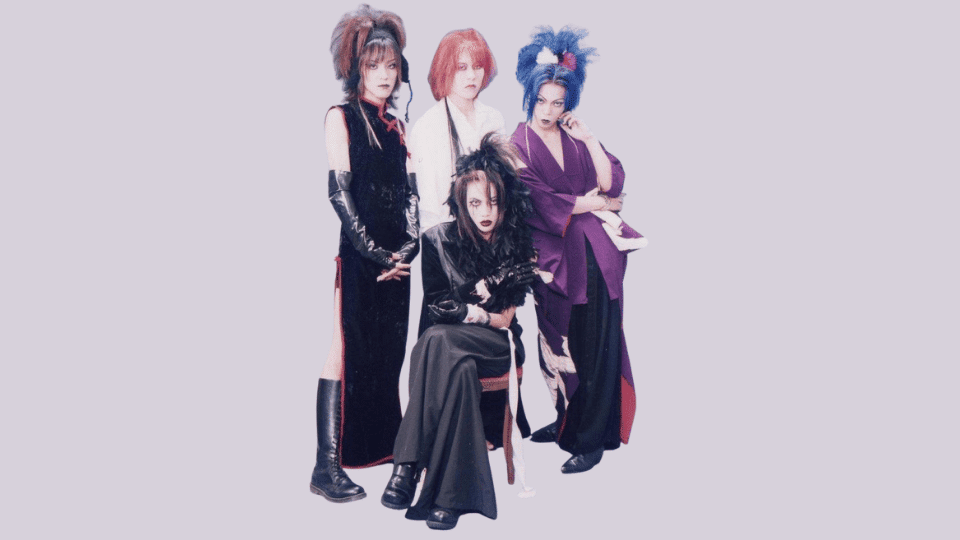
The 1980s marked Visual Kei’s rise as Japanese musicians absorbed Western influences and created a unique style.
Glam rock legends like David Bowie and T. Rex inspired theatrical presentation, while punk’s rebellious spirit fueled the movement’s anti-establishment attitude.
Japanese artists upgraded these influences by adding traditional Kabuki and Noh elements, forming a hybrid vibe.
X Japan pioneered the movement with Yoshiki’s gowned piano performances, blending speed metal and classical music through ornate costumes.
Buck-Tick added gothic Victorian elements, with early bands using visual experimentation to emphasize beauty over aggression.
Visual Kei Style in the 1990s and 2000s
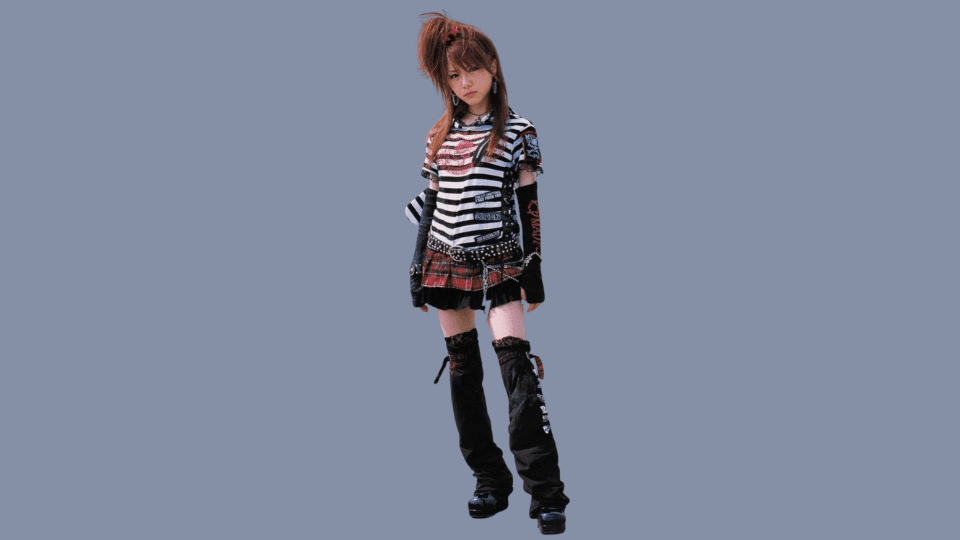
The 1990s saw Visual Kei transition from underground scenes to mainstream Japanese media, with major labels investing in elaborate productions and television exposure.
This commercial success provided the resources to increase visual presentations while maintaining artistic originality. The movement diversified into distinct substyles during this era.
It became a key countercultural expression for Japanese youth, providing alternative identities and community acceptance beyond traditional expectations. Young people used it to promote personal change and resist conformity.
Substyles of Visual Kei Fashion
Visual Kei’s evolution gave rise to distinct substyles, each representing unique philosophies and cultural influences that expanded the movement’s creative boundaries.
1. Gothic Kei
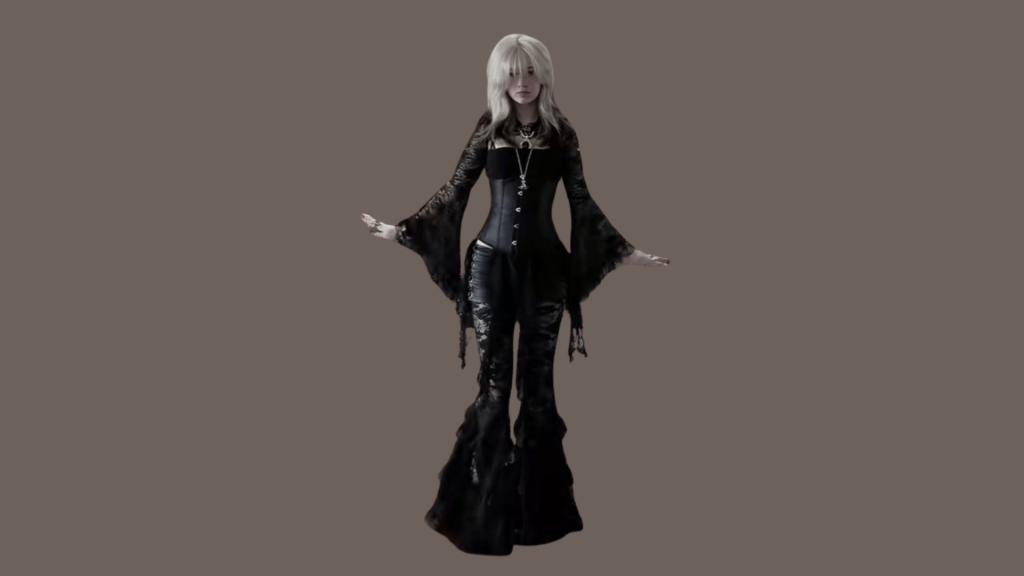
Source: Pinterest
Gothic Kei blends Victorian and medieval elements for dramatic historical fashion looks. Artists often use darkness, religious symbolism, and romantic melancholy as a means of creative expression.
- Dark, ornate clothing featuring rich fabrics like velvet and brocade
- Elaborate lace details, corsets, and flowing silhouettes that emphasize theatrical drama
- Accessories, including crosses, chains, and antique jewelry, create mysterious personas
2. Angura Kei
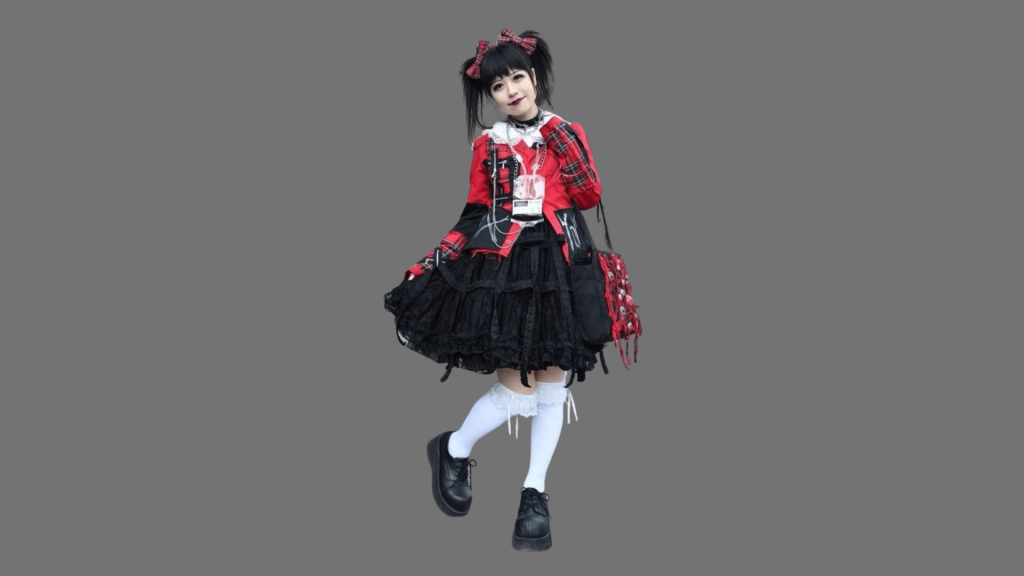
Source: Pinterest
Angura Kei is Visual Kei’s underground experimental style, prioritizing artistic shock value over commercial appeal. This substyle deliberately challenges beauty standards through unsettling, avant-garde aesthetics.
- Underground, anti-establishment looks that reject mainstream visual codes
- Experimental makeup featuring distorted features, unusual color combinations, and surreal designs
- Unconventional costumes incorporating found objects, deconstructed garments, and artistic installations
3. Tanbi Kei
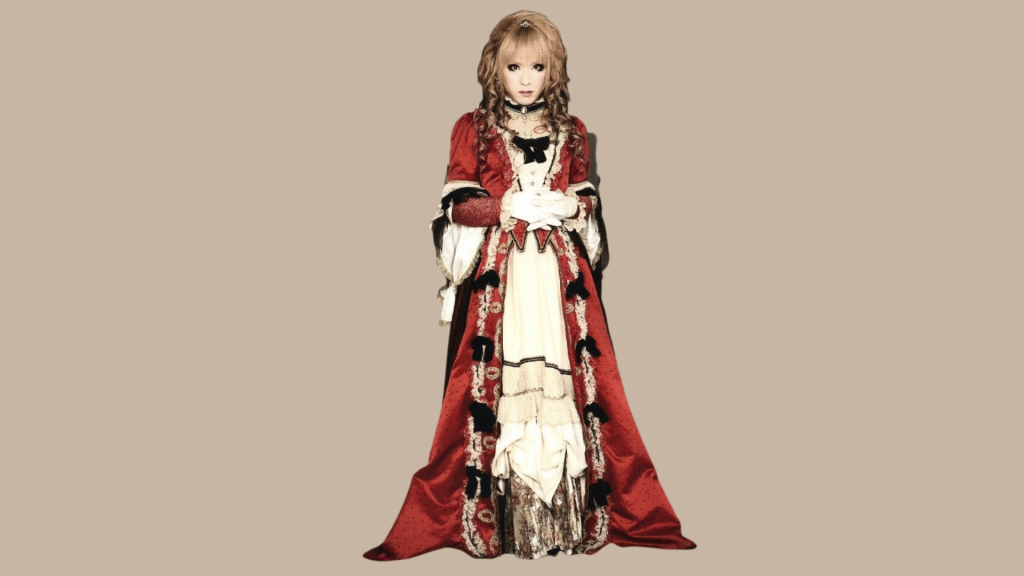
Source: Pinterest
Tanbi Kei emphasizes refined androgynous beauty inspired by Japanese literary aesthetics and classical art movements. This substyle celebrates idealized beauty through graceful presentation and styling.
- Focus on dreamy beauty, soft features, and graceful androgynous presentation
- Inspired by literary vibes, particularly Japanese romantic literature and Western decadent art movements
- Notable representatives include Malice Mizer’s elegant Gothic presentations and Versailles’ aristocratic visual
4. Softvi / Soft Kei
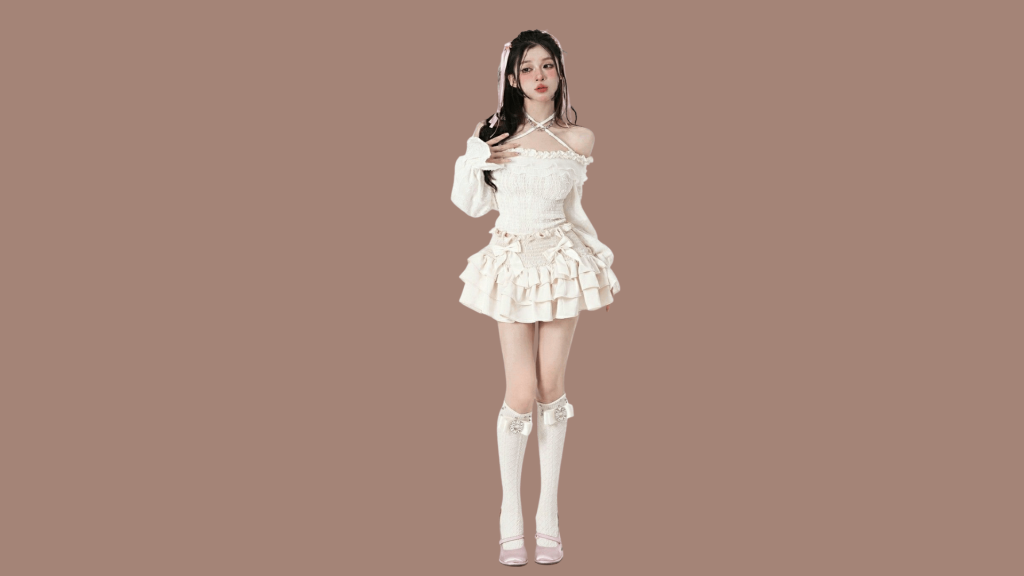
Source: Pinterest
Soft Visual emerged as Visual Kei’s accessible interpretation, maintaining the movement’s core principles while accepting mainstream appeal. This substyle prioritizes approachability without sacrificing artistic identity.
- Softer, less aggressive styling that appeals to broader audiences
- Minimalist makeup focusing on enhancement rather than dramatic change
- More wearable fashion incorporating elements into everyday clothing
5. Koteosa Kei
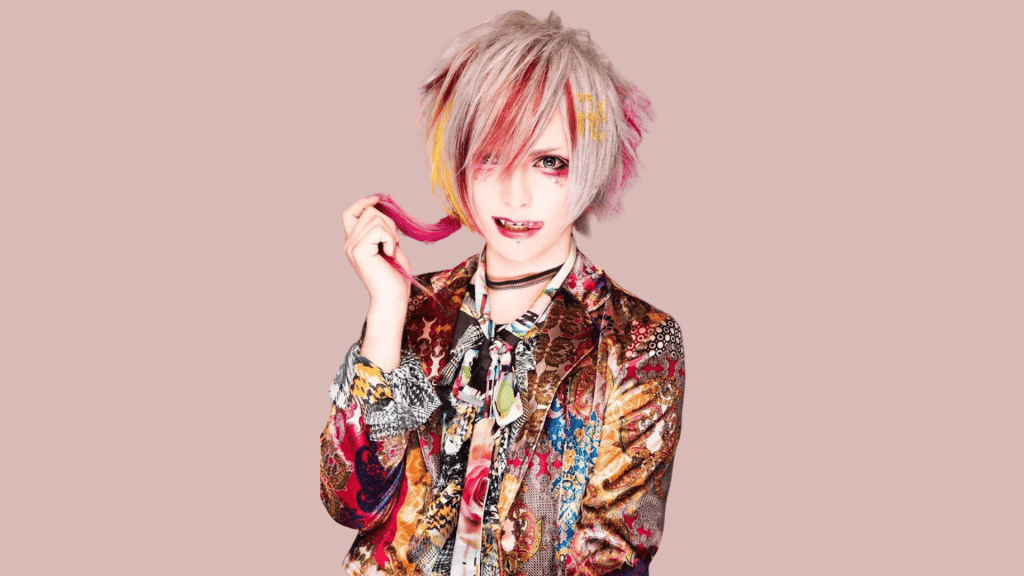
Source: Pinterest
Koteosa Kei represents the maximalist extreme of Visual Kei, emphasizing an overwhelming visual impact through elaborate presentation. Artists prioritize spectacle and theatrical grandeur over subtlety.
- Heavy, intricate costumes featuring multiple layers and ornate detailing
- Dramatic visuals designed for maximum stage presence and audience impact
- Maximalist styling philosophy where “more is more” guides choices
6. Iyrou Kei
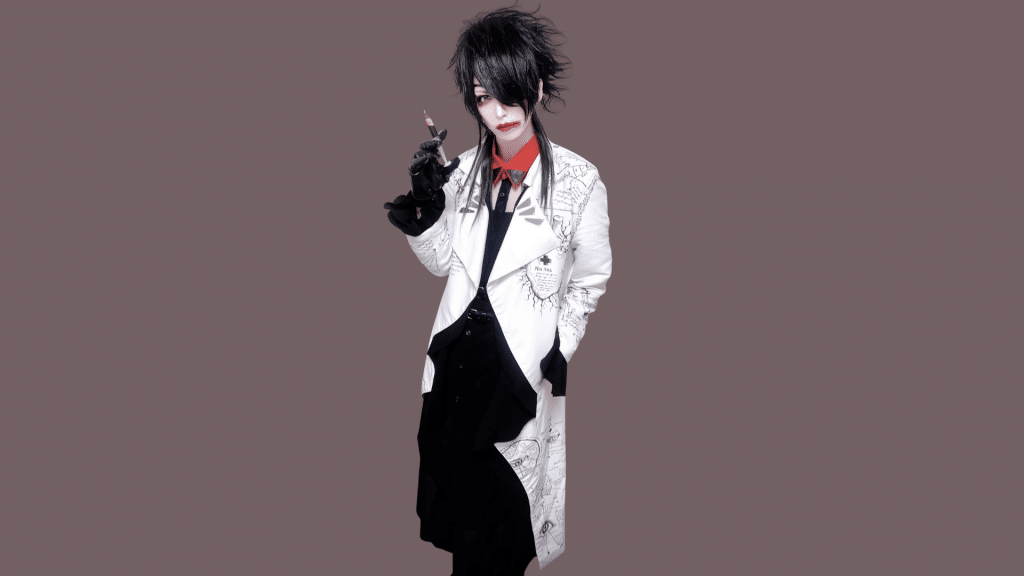
Source: Pinterest
Iyrou Kei is about themes of vulnerability and healing through a medical-inspired vibe. This substyle uses clinical imagery to address psychological and physical trauma symbolically.
- Medical or hospital-inspired fashion incorporating bandages, masks, and clinical accessories
- Symbolic representation of pain, recovery, and psychological healing processes
- Darker vibes that confront uncomfortable themes through visual metaphor
7. Nagoya Kei
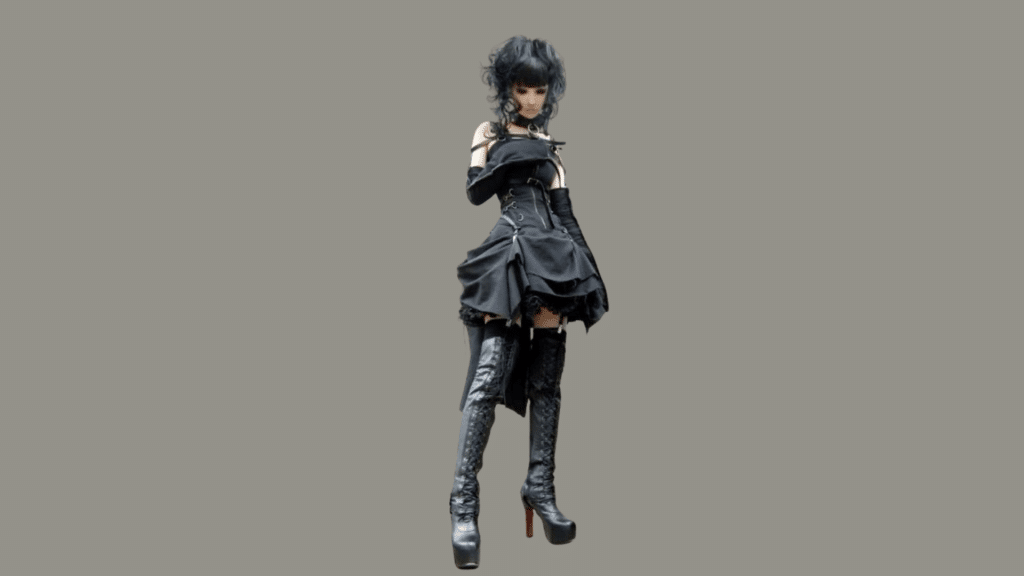
Source: Pinterest
Originating in Nagoya’s music scene, this substyle emphasizes emotional depth over visual extravagance, creating intimate connections between artists and audiences.
- Subdued visual styling that complements melancholic musical expressions
- More restrained vibes focusing on emotional originality
- Toned-down visuals that prioritize musical content while maintaining the identity
8. Eroguro Kei
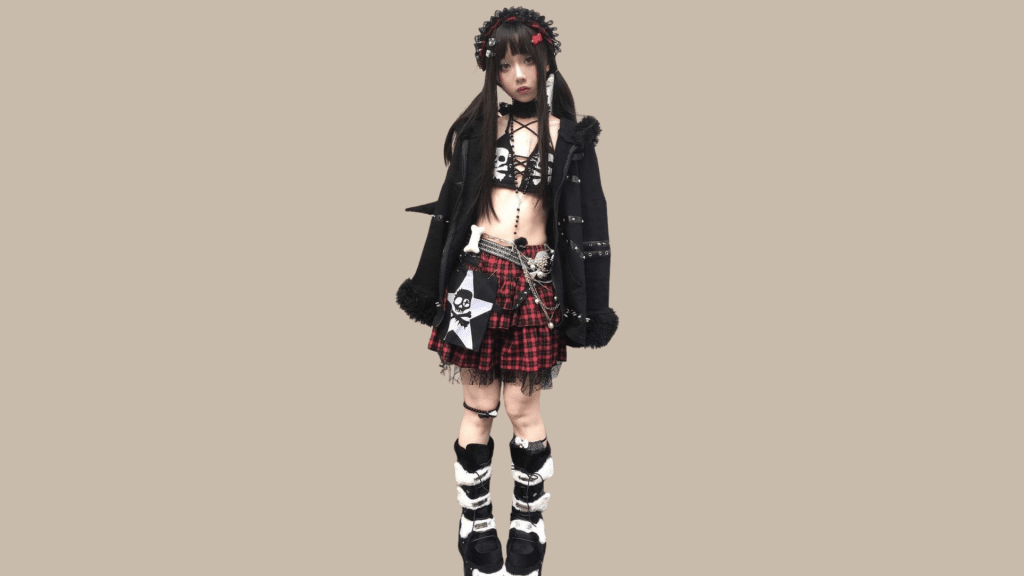
Source: Pinterest
Eroguro Kei combines erotic and grotesque elements, pushing Visual Kei’s boundaries through deliberately unsettling presentations that challenge conventional beauty standards.
- Fusion of eroticism and grotesque vibes creates provocative visual statements
- Shock value achieved through surreal, horror-inspired makeup and disturbing imagery
- Confrontational fashion designed to provoke strong emotional responses
9. Lolita Kei
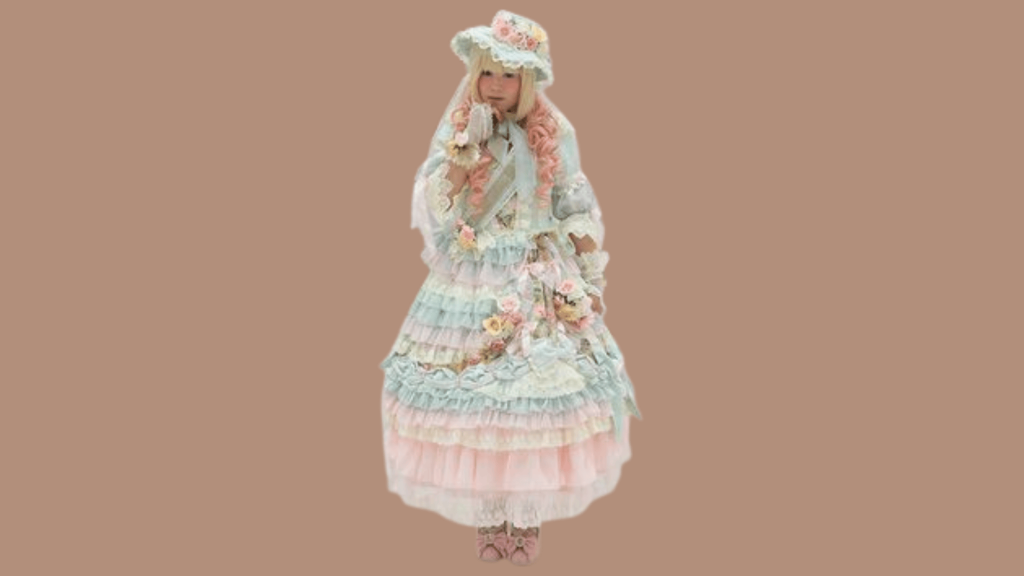
Source: Pinterest
Lolita Kei represents the intersection between Visual Kei’s theatrical presentation and Japan’s Lolita fashion movement, creating presentations that emphasize feminine beauty and Victorian times
- Crossover vibes incorporating Lolita fashion’s structural elements with Visual Kei’s dramatic flair
- Frilly dresses featuring elaborate petticoats, lace trim, and ornate detailing
- Doll-like makeup emphasizing porcelain skin, enlarged eyes, and soft features that create beauty
10. Oshare Kei
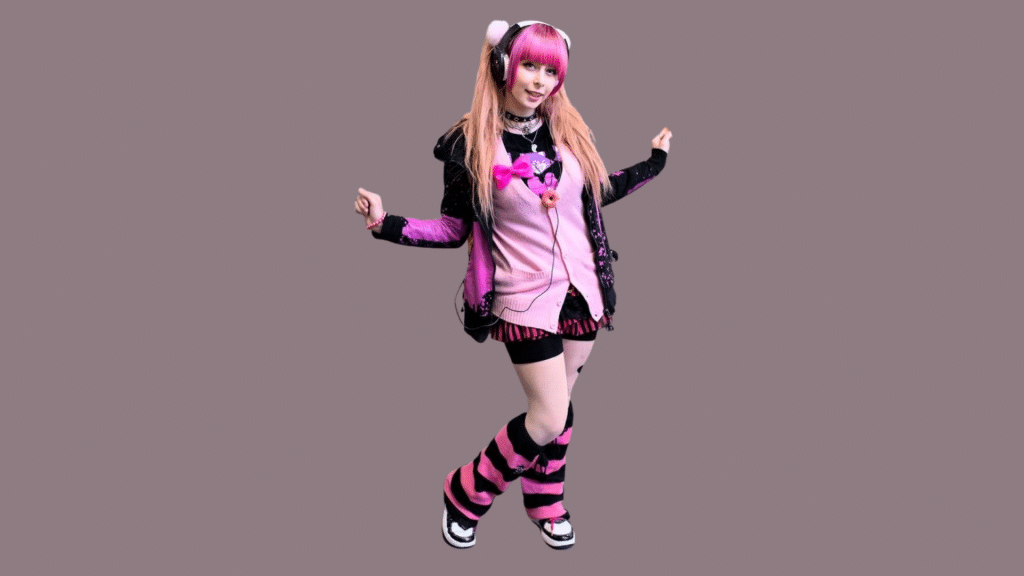
Source: Pinterest
Oshare Kei arose as Visual Kei’s most optimistic expression, rejecting darkness for lively celebration and youthful exuberance. This substyle appeals to younger audiences through its accessible and cheerful vibes.
- Bright, colorful styling featuring rainbow palettes and pop-culture references
- Youthful energy expressed through playful designs, cartoon motifs, and whimsical accessories
- Cheerful makeup and fashion that maintains Visual Kei’s creativity while accepting the positivity
11. Kurofuku Kei
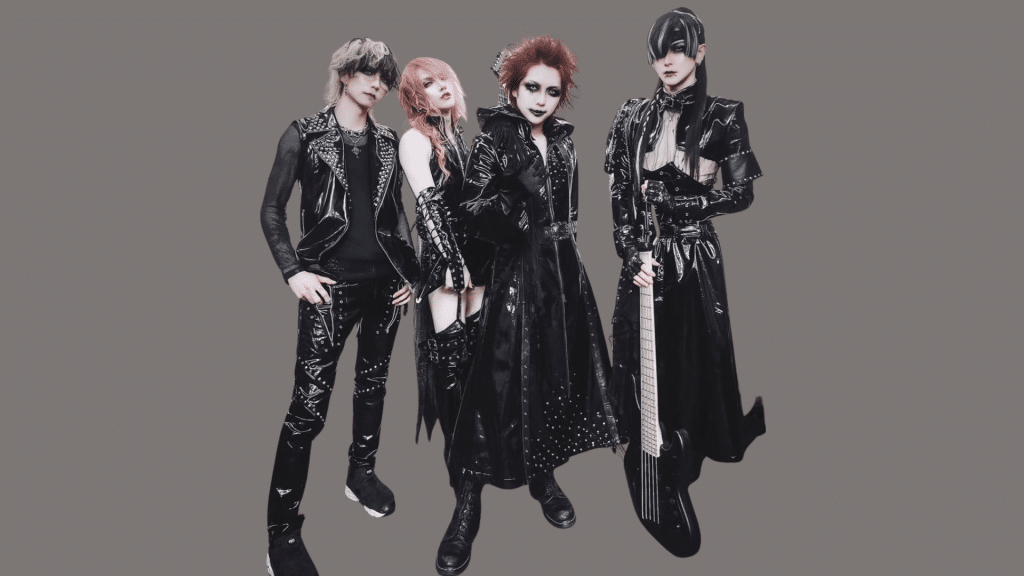
Source: Pinterest
Kurofuku Kei strips Visual Kei to its essential elements, emphasizing minimalism over elaborate ornamentation. This substyle proves that Visual Kei’s impact doesn’t require maximalist presentation.
- “Black clothing” philosophy focusing on monochrome wardrobes and restrained color palettes
- Dark, sharp silhouettes that create dramatic impact through precision rather than excess
- Minimalist that maintains Visual Kei’s theatrical qualities while incorporating subtle and refined vibe choices
The Legacy of Visual Kei
Visual Kei’s transition from underground rebellion to respected art form shows its lasting cultural impact. Fashion designers now use its gender-fluid, theatrical style, inspiring global creativity.
Its shift from shock value to artistic legitimacy reflects broader acceptance of alternative identities.
Museums display its costumes as art, and scholars study its sociological meaning. This respectability honors its artistic role without losing its rebellious spirit.
Its lasting legacy is its core philosophy: self-expression through visual change as a means of personal freedom and cultural resistance, inspiring creativity worldwide.
Conclusion
From its rebellious 1980s origins through mainstream acceptance and global expansion, Visual Kei style has consistently reinvented itself while maintaining core principles of artistic freedom and identity exploration.
Each decade brought new substyles from Gothic Kei’s Victorian darkness to Oshare Kei’s colorful optimism, proving the movement’s adaptability and creative resilience.
Visual Kei’s influence extends far beyond music venues, fundamentally reshaping how society perceives gender expression, personal style, and artistic originality.
Contemporary fashion’s incorporation of androgyny, theatrical presentation, and identity fluidity directly traces back to Visual Kei’s pioneering vision.

